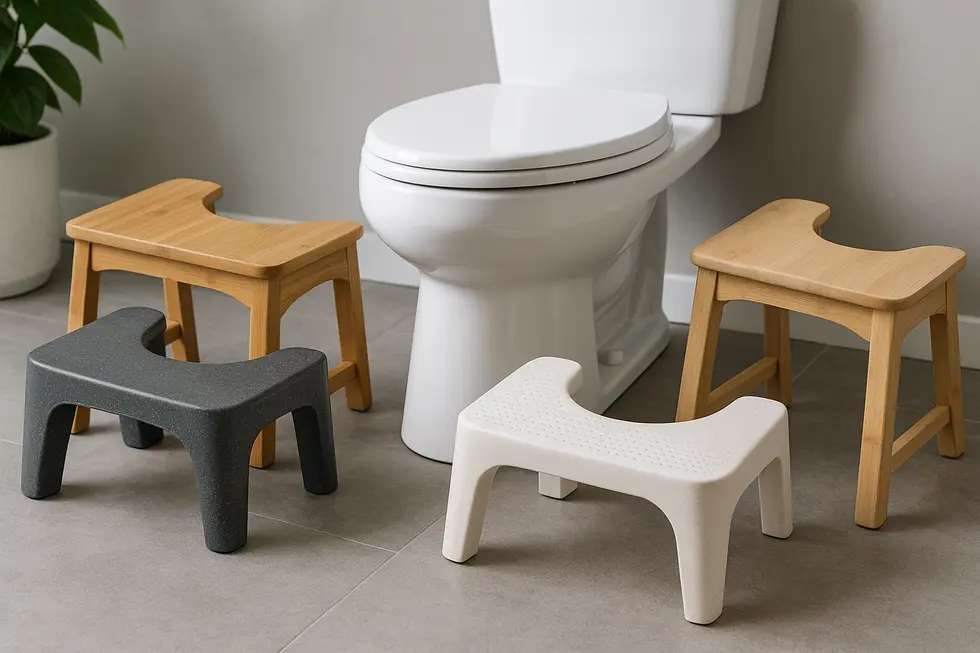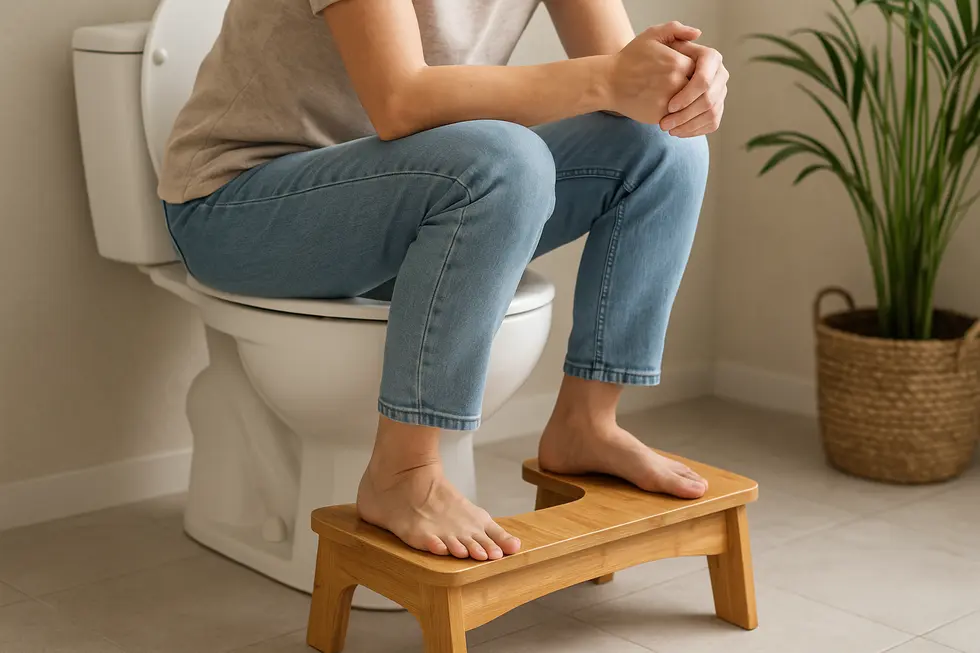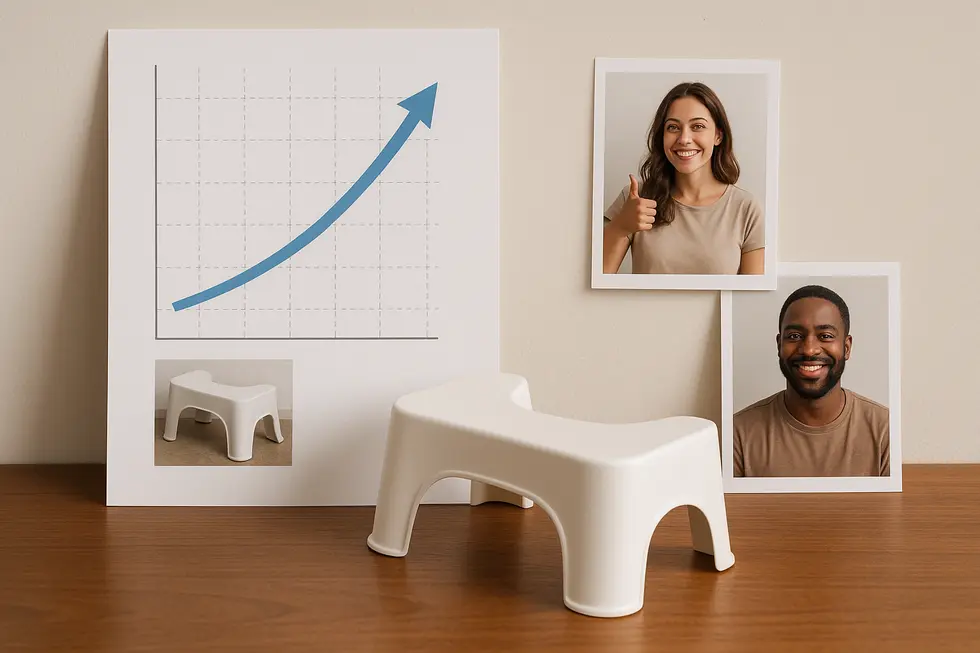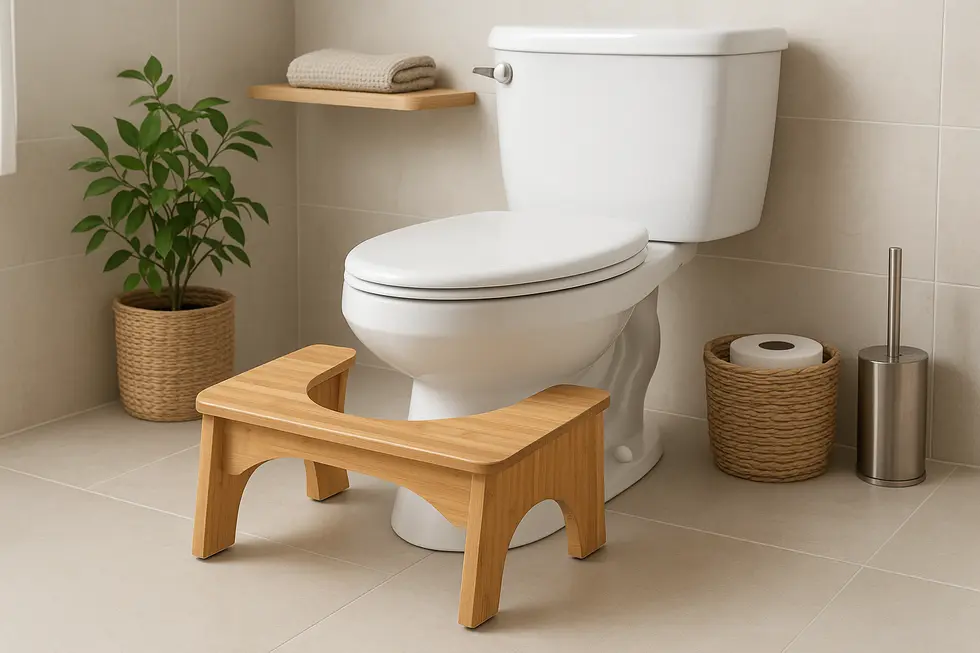Toilet Stools
Eco-Friendly Toilet Stools: A Green Approach to Comfort and Hygiene
Incorporating sustainability into our daily lives has become more critical than ever. One small yet impactful step is through eco-friendly toilet stools. By using sustainable materials and innovative designs, these stools not only enhance our bathroom experiences but also contribute to global environmental efforts. Each chapter will delve deeper into the sustainable materials and designs, health and ergonomic benefits, and the growing market trends that define eco-friendly toilet stools, providing a comprehensive understanding of their significance.
From Bamboo Grain to Recycled Resin: Sustainable Materials Driving the Eco-Friendly Toilet Stool Revolution

The materials chosen for a toilet stool once served a single purpose—stay dry near the commode. Today, they define whether the product aligns with a low-impact lifestyle. Designers are turning to fast-growing bamboo, post-consumer plastics, and even repurposed food packaging to craft stools that feel at home in both minimalist spas and bustling family bathrooms.
Bamboo is an obvious hero. It reaches harvest size in a few years, sequesters large amounts of carbon while growing, and requires no replanting after cutting. When laminated correctly, its longitudinal fibers produce a surprisingly rigid platform that resists bathroom humidity without synthetic coatings. Equally important, the warm wood-tone softens a room often dominated by cold porcelain and chrome, proving that sustainability can compliment aesthetics rather than compromise them.
Recycled plastics tell a different but equally compelling story. High-density polyethylene reclaimed from milk jugs or shampoo bottles is cleaned, pelletized, and molded into stools that rival virgin polymer for strength. Because the material is already food-grade, it remains free of BPA or phthalates, a reassurance for households with small children who inevitably treat the bathroom like a playground. Some manufacturers go further, sourcing post-industrial scraps locally and pressing them in regional facilities to slash transport emissions. These closed-loop practices give discarded packaging a second life that may last decades under a toilet.
Material innovation would be meaningless without ergonomic progress. Modern platforms feature gently sloped arches that pull feet toward the body, nudging the hips into a healthier squat. Others integrate hidden magnets so the stool docks neatly beneath the bowl, leaving floors clear. Height-adjustable models—celebrated in recent adjustable designs—swap unsightly screw legs for nested shells, allowing adults and children to fine-tune posture while keeping surfaces smooth for quick cleaning.
Even potties molded from recycled food trays now include splash guards engineered through computational fluid dynamics, demonstrating that planet-friendly choices need not sacrifice hygiene. An independent review praised such models for their drip-free pour spouts, highlighting how sustainable materials and thoughtful engineering can tackle practical pain points simultaneously.
In short, the eco-friendly toilet stool has evolved from a simple wooden block into a high-performance product where every grain, pellet, and curve is an intentional step toward healthier bodies and a lighter ecological footprint.
Sit Smart, Squat Green: Health and Ergonomic Rewards of an Eco-Friendly Toilet Stool

Adopting an eco-friendly toilet stool shaped from renewable materials quietly transforms daily hygiene into an act of self-care. By lifting the feet 7–9 inches, the squat toilet stool shifts the hips into a gentle squat. This position straightens the anorectal angle, allowing waste to exit more easily—eliminating the kink created by a typical seated posture. Less straining means fewer bouts of constipation, reduced pressure on hemorrhoidal veins, and calmer flare-ups for those managing irritable bowel syndrome. Many users of a toilet stool for constipation report a lighter, more complete feeling after elimination—an everyday benefit that supports long-term colon health.
The pelvic floor also reaps rewards. When the thighs press toward the torso, the puborectalis muscle naturally relaxes, relieving the pelvic floor from the bearing-down pressure that can weaken it over time. For new mothers, athletes, or individuals recovering from pelvic surgery, this subtle pelvic floor support helps preserve continence and core stability. Meanwhile, back muscles stay neutral; the spine no longer bends forward to push, easing lower-back tension commonly linked to traditional toilet seating.
Ergonomics extend beyond posture. Thoughtful eco-friendly designs feature wide, non-slip platforms that welcome bare or slippered feet, minimizing the risk of slips in a humid bathroom. Rounded edges prevent shin contact, while carefully calculated heights accommodate both standard and comfort-height toilets. Some models include gentle contours so legs rest naturally instead of splaying outward. Durability matters too: bamboo’s tight grain resists moisture and odor absorption, and a light plant-based finish keeps cleaning as simple as a warm cloth wipe.
Health and sustainability intertwine. Rapid-growing bamboo or recycled polymers give the stool a low carbon footprint, and their longevity reduces replacement cycles. Pairing the stool with a water-saving cleansing method—such as those discussed in our comprehensive toilet stool and digestive health guide—creates a synergistic routine that conserves resources while nurturing the body. If portability is essential, foldable designs molded from eco-certified PP plastic and powder-coated steel offer the same squatting benefits on road trips or in small apartments. Explore user reviews of such travel-ready options for additional ergonomic insights at the linked resource.
From Niche Curiosity to Bathroom Staple: How Eco-Friendly Toilet Stools Are Winning Hearts and Market Share

Early sales of eco-friendly toilet stools were driven by wellness enthusiasts, yet they now ride a much broader sustainability wave. Retail data on the category alone remains thin, but adjacent bathroom segments—bidet attachments, low-flow fixtures, recyclable paper goods—show double-digit growth year over year. Retailers read this as a proxy: when shoppers replace bleached tissue with bamboo rolls, they are also receptive to a stool that prevents strain and keeps plastic out of landfills.
Comfort still seals the deal. Surveys of home-improvement buyers list “health benefit I can feel immediately” as the top purchase trigger, just ahead of price. In practice, this means a consumer who discovers that elevating the feet eases digestion will pay a small premium for responsibly harvested bamboo or recycled polymer. Online reviews echo the pattern: five-star comments praise posture relief first, eco credentials second, reinforcing the idea that sustainability succeeds when it is paired with tangible comfort.
Digital education has accelerated adoption. Wellness influencers film stool demonstrations, home-renovation channels place them next to bidet seats, and comparison articles such as are toilet stools worth it answer practical objections in plain language. Because the item is compact and relatively inexpensive, many first-time buyers treat it as a low-risk test of eco-friendly living, often upgrading other fixtures after a positive experience.
Looking ahead, the line between a simple footrest and a connected bathroom device will blur. Design studios already prototype stools that fold away automatically, adjust height through app control, or integrate occupancy sensors to trigger soft lighting. More importantly, the materials story is advancing: mycelium composites, algae-based plastics, and cradle-to-cradle certified bamboos promise carbon-negative footprints. As smart-home hubs adopt water- and energy-tracking dashboards, an eco-friendly stool could report the posture time that contributes to faster, cleaner elimination, indirectly saving flushes.
Policy trends reinforce the momentum. Municipalities that reward green renovations with tax credits increasingly classify accessory furniture under the same umbrella as low-flow faucets. When incentives meet growing consumer literacy, mainstream penetration becomes likely—echoing the path bidets followed a decade ago. For homeowners mapping the next upgrade, the humble stool now sits alongside insulation and LED bulbs on lists of recommended planet-friendly tweaks (see Intelligent Living’s overview of seven eco-friendly home upgrades).
Final thoughts
Eco-friendly toilet stools represent a blend of comfort, health benefits, and environmental consciousness, proving that even small actions can lead to significant progress towards sustainability. By integrating these stools into daily life, families not only improve their well-being but also participate in global eco-friendly efforts. As awareness grows, the market for such stools is poised to expand, promising innovative developments in the pursuit of a greener future.
Experience a new standard of clean with PEGABidet—designed for comfort, safety, and independence. Join thousands who trust us to make personal care simple and dignified. Contact us contact@pegabidet.com
About us
PEGABidet is a brand owned by L.A NEXTGEN LLC, based in California. We design intuitive, hygienic, and accessible bathroom solutions that prioritize safety, dignity, and independence. Our mission is to make personal care effortless and empowering for people at every stage of life.

